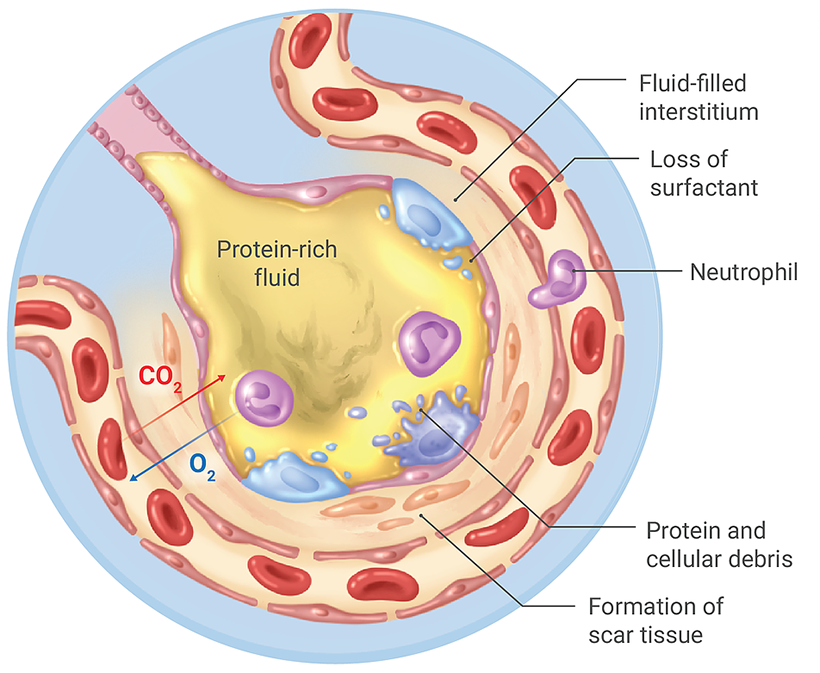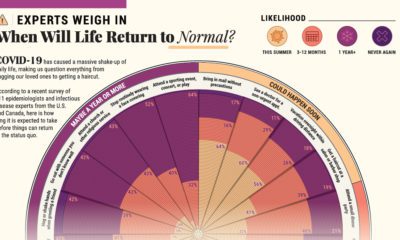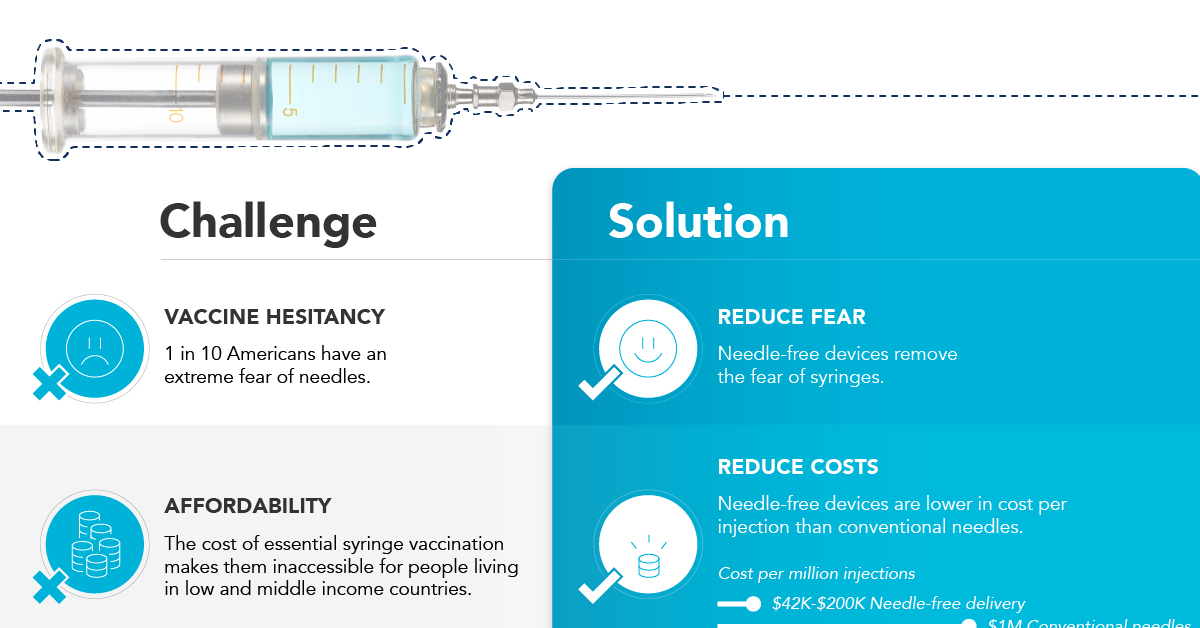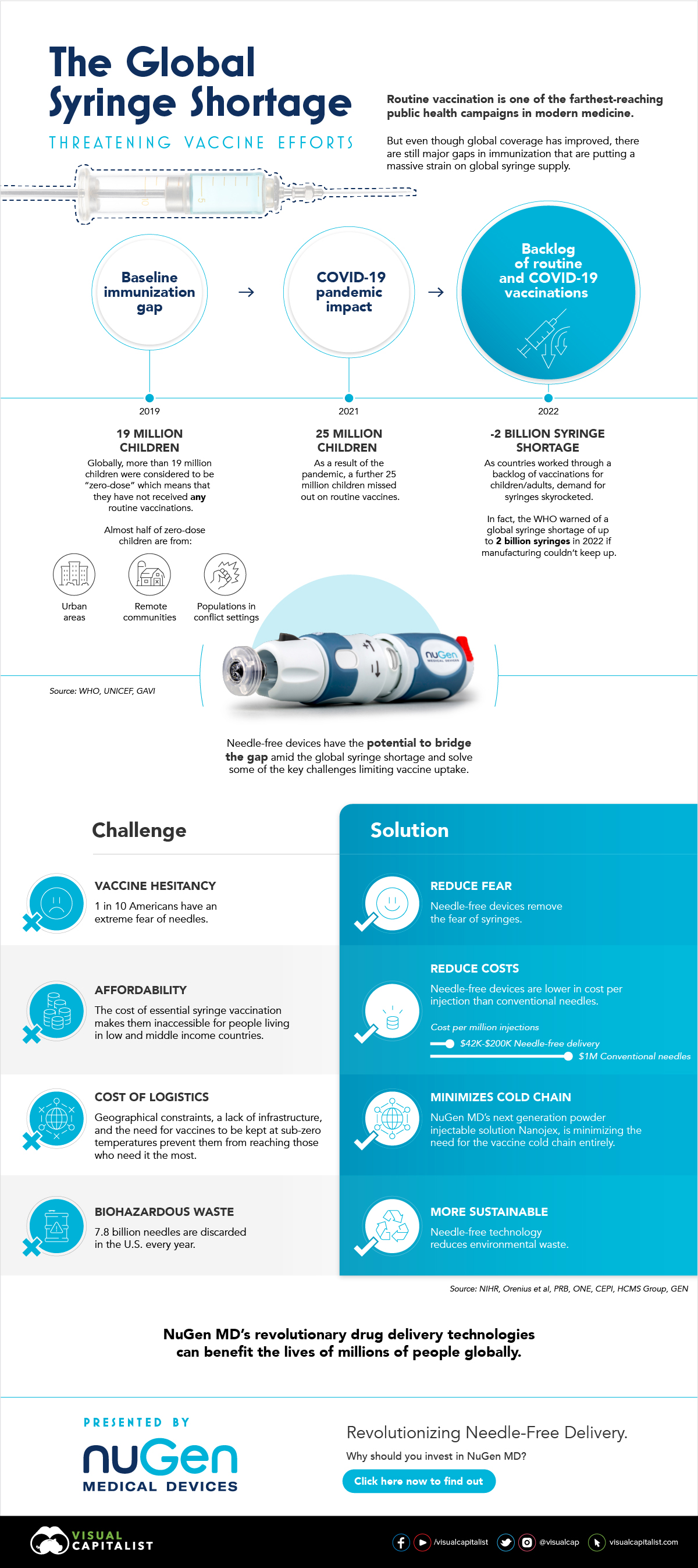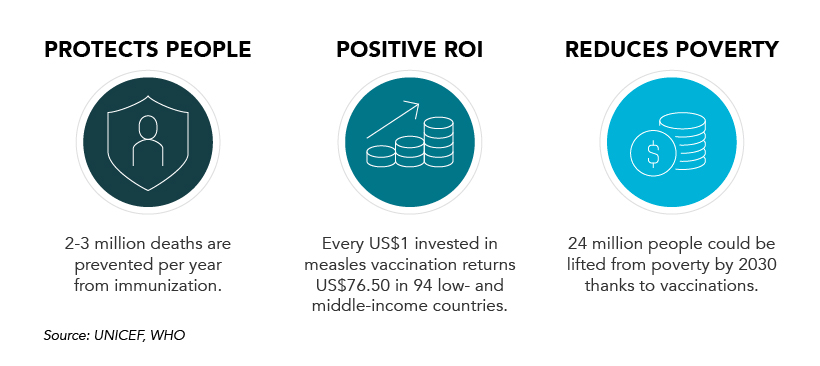By now, researchers and health experts have gained a better understanding of the range of symptoms caused by COVID-19, which include fever, a dry cough, and of course, the dangerous inflammation of the respiratory system. Most of us know that COVID-19 can be much more severe than a typical flu, but lesser known are the mechanics behind how the virus causes pneumonia in its victims. Today’s informative illustration, by scientific designer and animator Avesta Rastan, details the effects COVID-19 has on our lungs, from moderate to severe cases. According to the World Health Organization (WHO), most people who contract COVID-19 only experience mild flu-like symptoms. Occasionally though, the infection can cascade into a severe case of pneumonia that can be lethal, especially for older people and those with underlying medical conditions. Here’s what COVID-19 does to your body.
Infection
The virus, officially named SARS-CoV-2, enters the body – generally through the mouth or nose. From there, the virus makes its way down into the air sacs inside your lungs, known as alveoli. Once in the alveoli, the virus uses its distinctive spike proteins to “hijack” cells. The primary genetic programming of any virus is to make copies of itself, and COVID-19 is no exception. Once the virus’ RNA has entered a cell, new copies are made and the cell is killed in the process, releasing new viruses to infect neighboring cells in the alveolus. This process can occur initially without a person being aware of the infection, which is one of the reasons COVID-19 has been able to spread so effectively.
Immune Response
The process of hijacking cells to reproduce causes inflammation in the lungs, which triggers an immune response. As this process unfolds, fluid begins to accumulate in the alveoli, causing a dry cough and making breathing difficult. For 80-85% of people infected by COVID-19, these symptoms will run their course much as they would with a case of the flu.
Severe Symptoms
In 15-20% cases, the immune system’s response to inflammation in the lungs can cause what’s known as a “cytokine storm”. This runaway response can cause more damage to the body’s own cells than to the virus it’s trying to defeat, and is thought to be the main reason for why the conditions of young, otherwise healthy individuals can rapidly deteriorate. If enough alveoli collapse, a patient to be placed on a ventilator for breathing assistance. Both acute respiratory distress syndrome (ARDS) and high-altitude pulmonary edema (HAPE) are being investigated as causes.
At this stage, the surfactant that helps keep alveoli from collapsing has been diluted, and fluid containing cellular debris is impairing the gas exchange process that supplies oxygen to our bloodstream. In the most severe cases, systemic inflammatory response syndrome (SIRS) occurs as the protein-rich fluid from the lungs enters the bloodstream, resulting in septic shock and multi-organ failure. This is often the cause of death for people who have succumbed to a COVID-19 infection.
The Best Protection
Thankfully, COVID-19 isn’t a death sentence for most people who become infected, but the symptoms described above are not pleasant. Until a vaccine is developed, the best defense is avoiding infection altogether through frequent, thorough hand washing, and physical distancing as recommended by health authorities. To see the full set of graphics, as well as other health and science related illustrations, visit Avesta Rastan’s website. on In the above infographic from NuGen Medical Devices, we explore the factors leading to the syringe shortage and take a look at the company’s innovative needle-free solution that could play an important role in closing the immunization gap.
The Immunization Gap
Even before the COVID-19 pandemic, millions of people around the world struggled to get access to routine vaccinations. In fact, as of 2019 more than 19 million children around the world were considered to be “zero-dose” which means that they did not receive any routine vaccinations. Moreover, when the COVID-19 pandemic hit, global immunization dropped even further with 25 million children missing out on routine vaccines in 2021 alone.
Why is Immunization So Important?
Vaccinations prevent against over 20 life-threatening diseases and save between 2-3 million deaths per year, making them—as the WHO describes—the foundation of healthcare systems and an indisputable human right. As countries work through a backlog of vaccinations to close the immunization gap that has worsened since the pandemic, demand for syringes has significantly increased.
The Result: A Global Syringe Deficit
In 2022, the WHO warned that we could see a shortage of up to 2 billion syringes if manufacturing can’t keep up. This could result in the severe disruption to routine vaccinations and promote unsafe recycling of syringes in order to administer vaccines. But the issue goes far beyond a supply shortage of syringes. COVID-19 has brought conventional syringe vaccines into sharp focus, with many criticizing the challenges associated with them. With conventional needles facing so many challenges, it’s no surprise that investors are taking interest in viable alternatives. What’s more, these alternatives don’t just apply to vaccinations, they can also work for people with diabetes, dentists, and pet care.
Enter Needle-free Devices from NuGen MD
Needle-free devices have the potential to bridge the gap in immunization amid the global syringe shortage, solve some of the key challenges limiting vaccine uptake, and more importantly, benefit the lives of millions of people.
How Do They Work?
NuGen’s needle-free devices use a simple spring-loaded mechanism which uses pressure to release the liquid drug and penetrate the skin. In less than one-tenth of a second, the drug is dispensed more safely and evenly compared to needle syringes. It’s also virtually painless and leaves no mark on the skin.
Interested in investing in NuGen Medical Devices? To learn more about their plans to pioneer the future of needle-free drug delivery, click this link now.
